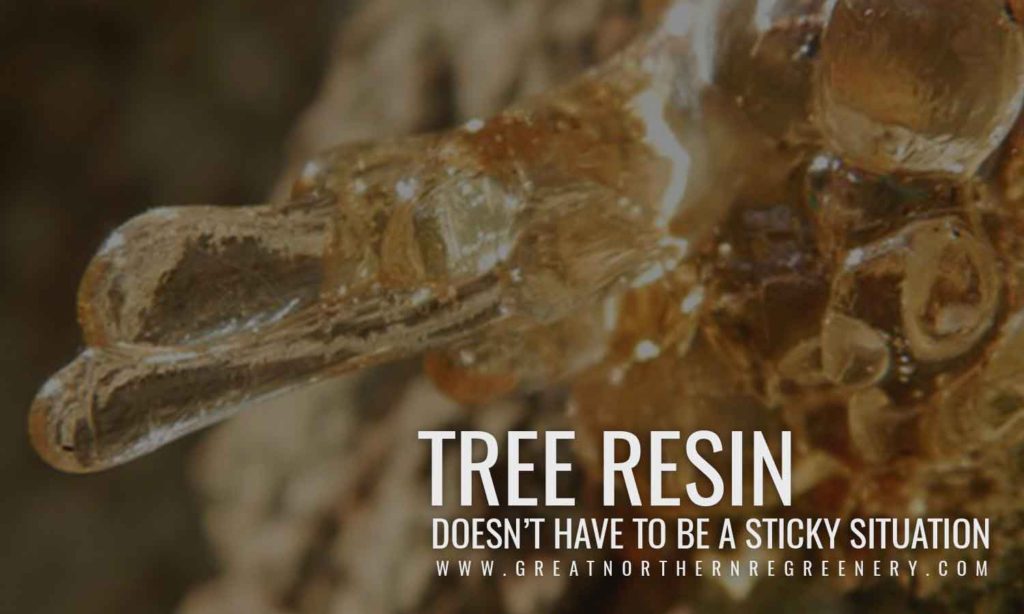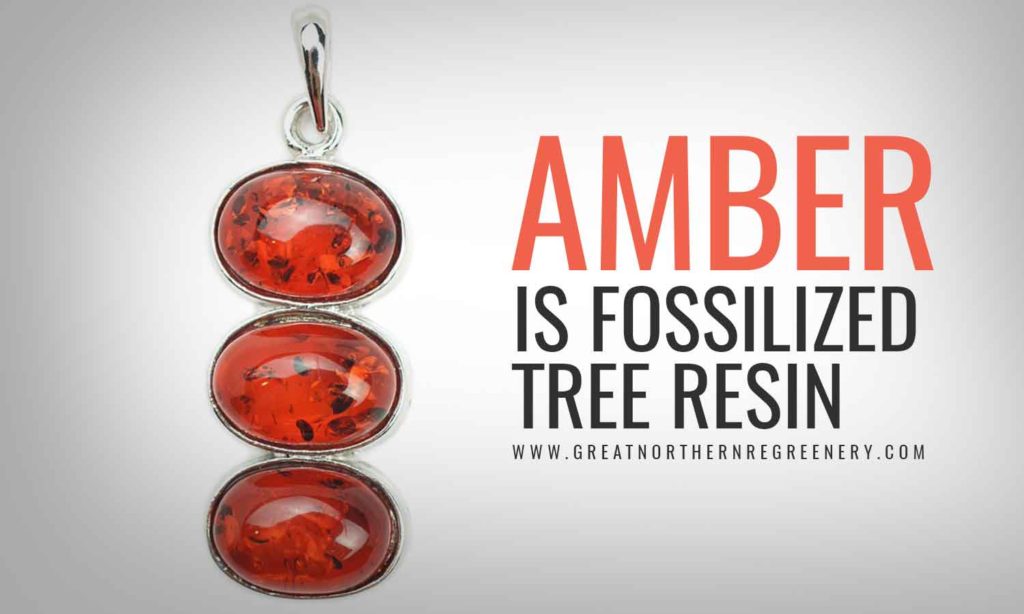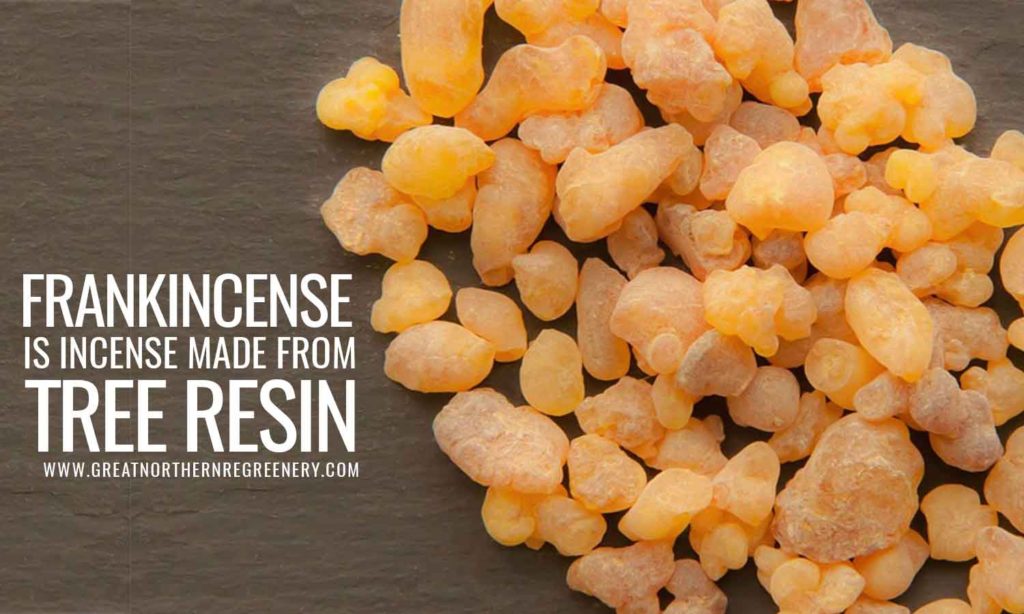
Using a real tree for your Christmas tree has many benefits – it’s sustainable, fragrant, and beautiful. It also comes with a sticky gum-like resin that most see as a downside. However, the resin from pine, spruce, and balsam trees have many fascinating uses, including traditional medicine, practical outdoor uses, and advanced scientific applications. It is also surprisingly easy to remove from carpets, clothing, your car, your hands, and even pet hair.
So don’t be alarmed if your tree has gifted you some resin this holiday season. Clean it away easily with household items you probably already have on hand — and consider keeping some around to use in other ways.
What Is Tree Resin?

Tree resin has several different names, including gum and pitch. It is thick, sticky, and usually an amber colour (which stands to reason, since amber is fossilized resin). It is generally produced by coniferous trees, and is different from sap, which is a watery substance produced by all trees. Sap delivers nutrients to every part of the tree, while resin takes nutrients from the tree and uses then to protect the tree from infection and invasion. Resin is part of your tree’s natural defence system; if a live tree is showing signs of excess resin, that’s a sign that the tree is under stress.
History of Resin Use

Tree resin has been used for centuries by humans all over the world. There is evidence of its use in the middle Stone Age as an adhesive for stone tools. The Ancient Egyptians were the first to combine pine resins with solvents to create beautiful and durable varnishes. They also used them as a key ingredient in the mummification process.
Frankincense and myrrh – made famous by the story of the Wise Men – are tree resins, from the frankincense tree and from several different species of shrubs, respectively. These resins are collected, dried and processed, and used for perfume and incense, and as an ingredient in many traditional remedies.
Canada’s indigenous people were well-versed in the uses of resins. They chewed spruce gum as a treat (much as we use chewing gum today) and brewed spruce bark tea to treat colds and to boost the immune system. Pine resin was also used as an antiseptic and anti-inflammatory. It was spread directly onto wounds and small burns, to seal them from infection and speed the healing process, or made into a salve by melting it with beeswax and a carrier oil. This salve was used to treat skin rashes and eczema, and was spread on the chest for aromatherapeutic treatment. They also used tree resin as a waterproof sealant for birchbark canoes, and as a fire starter, much like we would use lighter fluid.
The indigenous peoples of Canada shared this knowledge with early European settlers. Many of these methods are still used by indigenous people, by herbalists, and by outdoors enthusiasts.
Modern Uses of Tree Resin
Today, tree resins are widely used in varnishes, adhesives and food-glazing agents. They are the main ingredient in turpentine, which can be used as a solvent for oil paint, and as a raw ingredient for chemical compounds such as camphor, used for perfumes, cosmetics, and flavouring. Tree resin is still a key ingredient in some cold remedies and most chest rubs.
Tree resin can be useful to have at home, or when you’re in the woods. To harvest resin from a live tree, look for a telltale blister where sap has accumulated under the bark. Place a knife under the blister and pierce it. Resin will be released, and can be stored in any small receptacle for use in your first-aid or fire-lighting kit.
- For first aid – In the same way that some people use strong glue to seal wounds, tree resin is sticky enough to staunch the bleeding of small cuts and can be a better solution than plaster bandages for difficult-to-reach cuts and other areas that require flexibility, such as fingertips and finger joints. Because of its antiseptic properties, resin also forms an effective seal against infection.
- As an adhesive – All you need to make a strong glue is tree resin and charcoal from your fireplace. Grind the charcoal into a fine powder and mix it with melted resin. Keep it on the end of a stick and it will harden when it cools. In order to use it as glue again, just heat the end of the stick over the fire.
- As a light source – To make a resin candle, find a rock or piece of hardwood with a bowl-shaped indentation – if using wood, you can use a piece of charcoal to burn an indentation. Next, fill the indentation with tree resin. Then add a wick – any piece of cloth, string, or even a pinecone will work. Light the wick and continue to add resin as it burns. Never leave lit candles unattended.

- As a firestarter – If you’re trying to start a campfire on a damp day, smear or crumble some resin onto leaves, twigs, or small sticks. When you light them, the resin will easily burn long and hot enough to ignite larger pieces of wood.
Removing Resin Around the Home
As useful as tree resin is, there are times when you don’t want it around. Because it is so sticky, one would think it is extremely difficult to clean; but in reality, it’s straightforward and relatively easy to clean tree resin from many different surfaces. To remove resin from your:

- Car: Use acetone (the ingredient in nail varnish remover) on a cotton ball and rub in a circular motion. Be sure to wash the acetone away promptly, since it can damage the paint job if left too long.
- Deck or Floor: Use an oil soap made for wood surfaces. Mop it over the area and leave it for 15 minutes then scrub lightly with a deck brush.
- Clothing: Use an oil-based lubricant, like Pinesol or WD-40. Work it into the resin, then run the clothes through the laundry.
- Carpet: First, try hardening the resin with ice or rubbing alcohol, and then chipping it off. If that doesn’t work, spray WD-40 onto the resin spot, leave it for 15 minutes, then apply a strong dishwashing detergent. Use a wet sponge to remove the detergent, and then dry with a towel.

- Take care when washing resin from your pet’s fur.: It’s important to use only food-safe products so neither you nor your pet runs the risk of ingesting anything harmful. Use vegetable oil, butter, or even mayonnaise or natural peanut butter. Wash away residue with soapy water.
Excess Resin on Your Living Tree
While resin is an extremely useful substance, too much of it on a live tree might be a sign of infestation or disease. It’s always best to consult a professional arborist who can catch problems early to increase your chances of saving the tree, and prevent the problem from spreading. Great Northern Regreenery offers quality tree care in the York-Simcoe area, including Alliston, Aurora, Bradford, and Newmarket. Call (905) 775-7444 today for a free inspection and assessment.





